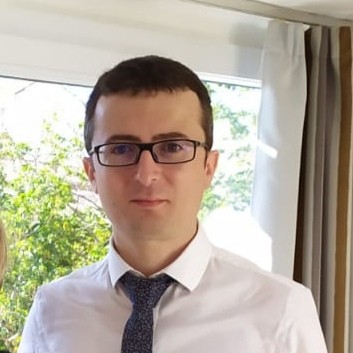Ascendance is making waves in the aerospace industry with a clear ambition: to decarbonize air transport with more sustainable solutions. This visionary startup is developing Sterna, a hybrid-electric propulsion system, and Atea, a vertical takeoff and landing aircraft. To bring these innovations to life, Ascendance relies on advanced simulation and high-performance computing (HPC) technologies.
To support rapid growth and accelerate Sterna’s commercialization and Atea’s industrialization, the company partnered with Oracle Cloud Infrastructure (OCI) and its HPC solutions. This strategic collaboration helps Ascendance meet growing demands for computing power, flexibility, and scalability.
As projects expand and needs evolve, Ascendance strengthened its partnership with Oracle by deploying a new simulation system powered by NVIDIA’s accelerated computing platform on OCI. The dramatic performance gains have been a game changer for Ascendance’s technical teams.
A Fast-Growing Company Facing High Market Expectations
In the past two years, Ascendance has achieved major milestones, strengthening its industry appeal. With 612 signed letters of intent and a dozen potential clients identified worldwide, the company is positioning itself as a key player in decarbonizing aviation.
Technologically, Ascendance has tackled complex challenges to develop innovative propulsion systems and advance its next-generation hybrid-electric aircraft. The R&D teams have performed intensive testing, including full-scale bench tests of the aircraft’s hybrid-electric propulsion system, meticulously analyzing every mechanism to validate solutions and anticipate real-world conditions.
This rigorous approach enables Ascendance to finalize its aircraft prototype, targeting an inaugural flight in 2025.
Superior Computing Performance to Accelerate Testing
In addition to accelerating its go-to-market timeline, Ascendance must navigate a complex regulatory landscape. Commercial aircraft certification requires extensive simulations to comply with new EASA (European Union Aviation Safety Agency) regulations.
To meet this challenge, Ascendance turned to Cadence’s simulation solutions, hosted on Oracle Cloud Infrastructure (OCI).
“We’ve shifted from a startup mindset to becoming a major aerospace player with stringent compliance requirements,” explains Frédéric Barrois, Overall Aircraft Design Lead at Ascendance. “Upgrading our tools was essential to meet this challenge.”
To validate OCI as the backbone of its solution, Ascendance conducted rigorous benchmark tests with Oracle and Cadence experts. Initial results showed significant time savings, but the real breakthrough came with NVIDIA A100 Tensor Core GPUs– accelerated simulations that reduced computing time by a factor of 20.
Performance Gains That Transform Workflows
Aircraft behavior calculations that once took over a week now complete in under four hours.
Simulations are especially complex for a vertical takeoff and landing (VTOL) aircraft like Atea. They must model the behavior of ten rotors activating at different times to transition from vertical to horizontal thrust.
“Our aircraft’s rotor operations require time-dependent calculations, which are computationally intensive,” says Ignacio Gonzalez-Martino, Aerodynamics Engineer at Ascendance. “The combination of Cadence and OCI dramatically increased our simulation volume.”
Faster simulation results have reduced development cycles by a factor of five, optimizing Ascendance’s workflow.
“It’s a true game changer: We’ve quadrupled computing capacity without increasing costs, allowing us to dive deeper into complex challenges with more advanced calculations.”
Another key benefit: computing resource carbon footprint has been reduced 15-fold—a crucial factor for a company committed to lowering aviation’s environmental impact.
A Rapid Implementation Thanks to Seamless Team Collaboration
Ascendance benefited from Oracle’s full commitment to make the project a success. Having built a strong relationship, Oracle provided enhanced support during Ascendance’s startup phase, including crucial assistance with computing resources and expertise.
“Oracle quickly provided GPUs, a major advantage over other hyperscalers,” confirms Ignacio Gonzalez-Martino. “With dedicated infrastructure, we can perform more exploratory calculations without worrying about cost since it’s not tied to computing power consumption.”
The new solution was implemented in just two weeks thanks to seamless collaboration between Oracle, Cadence, and Ascendance teams. The infrastructure was optimized to handle peak workloads, ensuring scalability for future growth.
A Long-Term Collaboration
The simulations generate massive data volumes that must be stored, secured, and analyzed for maximum value. A key goal for Ascendance is leveraging this data effectively.
The company is exploring Oracle’s solutions to aggregate technical and corporate data, aiming to build a cohesive, high-performance decision-making system. This opens the door to AI-powered analytics and new possibilities.
“We’re particularly interested in AI’s potential for data analysis,” adds Frédéric Barrois. “With OCI infrastructure, we now have the computational resources to move even faster.”

